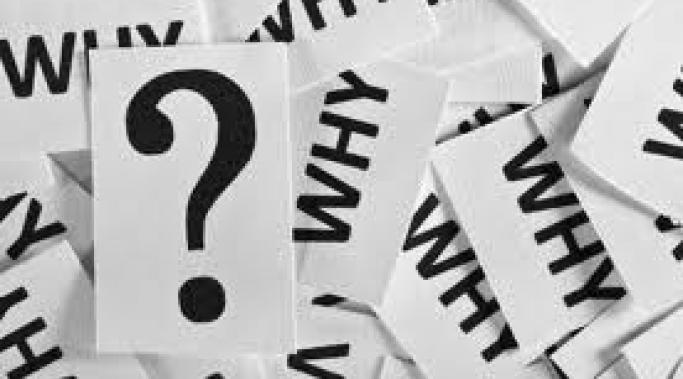It’s getting close to the season of pumpkins and cinnamon and apples. In some places, it is already here and the walls of stores are painted in orange and black. Since recently a lot of my blogs have focused on skin picking, I’ll just keep the topic going for a little bit longer. This being my favorite season of the year, I’ve decided to make a pact with myself when it comes to self-harm, even though I technically haven’t self-harmed in over five years.
I will stop picking my skin and pick apples instead. Well, sort of.
Self-Injury Awareness
During my self-harming years, writing was my main outlet and focus. All my life, I’ve been writing, but as a teenager dealing with deep depression and a parent’s divorce, writing became more than just a hobby. It became the one coping skill I could really count on.
Well, until my floppy disk would crash (yes, floppy disk).
I’m not trying to push writing onto self-harmers who are seeking a positive coping skill to replace their negative one. I’m just putting it out there as an option. There are many other creative ways that can help you stop harming yourself. But since writing is the skill that practically saved my life, it is the one I know best.
It’s the time of the year when everywhere you go you run into a “Back-To-School Sale” sign or catch yourself singing a catchy, yet annoying, commercial jingle. This time of the summer can be tough because even though I’m not going back to school in any way, shape or form, I find myself being drawn towards new clothes and bedroom décor.
However, it’s also tough being surrounded by the not-so-terrific memories of high school – memories linked to self-harm.
Have you ever asked yourself, "Why do I self-harm?" or "Why do I let things trigger my self-injury behaviors?"
The word “why” varies from being a good and a bad word. As a kid, you constantly ask why because you want to know about the world you live in: “Why is the sky blue” or “Why is your hair curly?” As a child, that word is part of life and learning and discovery. The word is natural. Sometimes, if we never asked why, we’d never know.
However, sometimes asking why can become a stressor when struggling with death, disease or self-injury and mental illness.
When digging through some papers from my past, I found a children’s poem I’d written for a class that had to contain a positive message. Reading over this, I thought it would be worth it to share, even though it doesn’t come out and speak about self-injury. However, when it comes to discussing self-harm, positive thinking is a crucial element.
Positive self-talk has been mentioned throughout my blogs because it is a very important coping skill for, not only those struggling with self-injury, but for anybody battling a demon. When I am tired and un-motivated to wake up in the morning, I will tell myself things to get my energy and confidence moving. It is not as easy as it seems and is definitely easier said than done, but positive self-talk definitely leads towards overall positive thinking.
It’s obvious that self-harm and self-esteem are linked in some way or another. Typically, if someone is feeling down in the dumps, they are going to try to find a way to get rid of that feeling. When self-harmers feel this way, they turn to one of the only coping skills they know – cutting, burning, hair pulling, scratching or head banging (as well as others, of course).
When struggling with any kind of mental illness, it is extremely tough to bounce right out of a negative place. It’s easy to listen to therapists, friends, teachers and even bloggers when they tell you to “Keep your chin up” or “Shake it off”, but is it easy to actually shake off that feeling?
Not usually.
Recently, I was picking up my client from summer school and as I was standing in the hallway, I noticed how diverse the population walking by me was. My client has a developmental disability as well as a mental illness, so the school where her summer classes took place was mainly for those who needed a little extra support.
I saw individuals who had Autism, Down syndrome, aggressive behaviors, Cerebral Palsy and other different disabilities or disorders that allowed them to take summer classes at BOCES.
As I watched the students walk by, I wondered how difficult it was for outsiders to see these wonderful kids as having “unique abilities” rather than having disabilities.
In this audio blog, a paragraph from a chapter is read that brings forward the issue of Angel vs. Devil. Below is the general idea for the novel, Noon, that I recently published. One character is in the mental health unit at a big hospital in a little town where she receives treatment.
And yes, she self-harms.
Sometimes, people telling you to just stop cutting or burning or scratching is not enough motivation to actually stop the self-injury behavior. It is like asking someone not to text their ex-boyfriend or ex-girlfriend when they’re staring at a message. It is something they should not do, but they can’t help themselves, so they do it.
It is much more difficult to find a motivating factor to help stop self-harm than many believe. Of course, there is therapy and family and friendships (self-injury treatment), but in the mind of a severe self-injurer, sometimes that is not enough.
It often takes time to find motivation to begin self-harm recovery and end this addictive struggle with self-harm.
Those struggling with drug addiction may have people around who understand or relate to their situation. Even some with severe depression and anxiety have some kind of support system, since action can be taken quickly if willing to get help. Alcohol addicts also have meetings and groups where they can discuss their frustrations in a social, private setting.
What about self-harmers?









